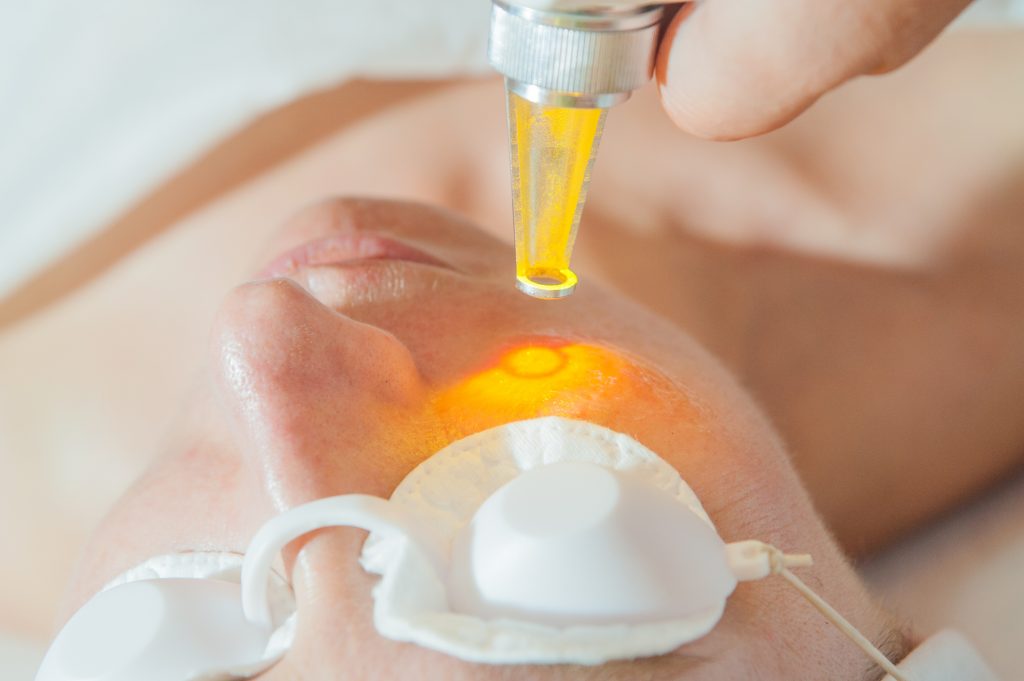Overview
Rosacea is a common skin condition that causes redness and visible blood vessels in your face. It may also produce small, red, pus-filled bumps. These signs and symptoms may flare up for a period of weeks to months and then diminish for a while. Rosacea can be mistaken for acne, an allergic reaction or other skin problems.
Rosacea can occur in anyone. But it most commonly affects middle-aged women who have fair skin. While there’s no cure, treatments can control and reduce the signs and symptoms. If you experience persistent redness of your face, see your doctor for a diagnosis and proper treatment.
Symptoms
Signs and symptoms of rosacea may include:
- Facial redness. Rosacea usually causes a persistent redness in the central part of your face. Small blood vessels on your nose and cheeks often swell and become visible.
- Swollen red bumps. Many people who have rosacea also develop pimples on their face that resemble acne. These bumps sometimes contain pus. Your skin may feel hot and tender.
- Eye problems. About half of the people who have rosacea also experience eye dryness, irritation and swollen, reddened eyelids. In some people, rosacea’s eye symptoms precede the skin symptoms.
- Enlarged nose. Rarely, rosacea can thicken the skin on the nose, causing the nose to appear bulbous (rhinophyma). This occurs more often in men than in women.
Causes
The cause of rosacea is unknown, but it could be due to a combination of hereditary and environmental factors. Rosacea is not caused by poor hygiene.
Treatment
Laser rosacea therapy is a way to treat a rosacea complexion. One of the most common and effective treatments is the pulsed dye laser (PDL), which targets visible blood vessels and can reduce redness and flushing by destroying the lining of the inflamed blood vessels.
Who Is a Good Candidate for Laser Rosacea Therapy?
Laser rosacea therapy is most effective for people with light, untanned skin. The treatment is not recommended for people with a tan or who are naturally dark skinned. People who scar easily, have a blood-clotting disorder, are pregnant or have insulin-dependent diabetes also should avoid laser treatment.
How Is Laser Rosacea Therapy Done?

Dr. Sergio Verduzco will use a hand-held laser to target specific problem areas. Typically, laser therapy requires a series of treatments to see results. Depending on your condition, you may need two to eight treatments, and they will be spaced a few weeks apart.
Are There Side Effects to Laser Rosacea Therapy?
You may experience some redness and swelling immediately following a treatment, and your skin may be tender. In some people, bruising, discoloration and scarring can occur.
How Long Will Laser Rosacea Therapy Last?
Although it is not a cure, the effects of laser rosacea therapy can last for months or, in some cases, years. Your doctor at Dermatology Partners can advise you on how this treatment may be beneficial for you.
